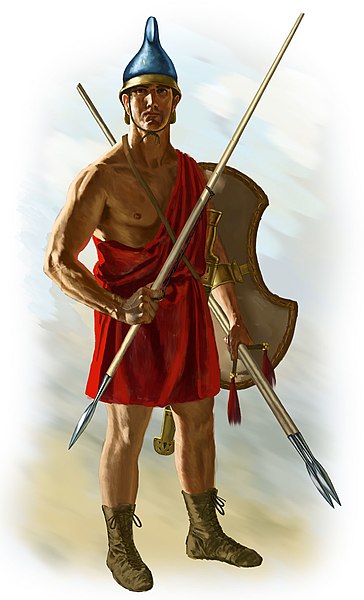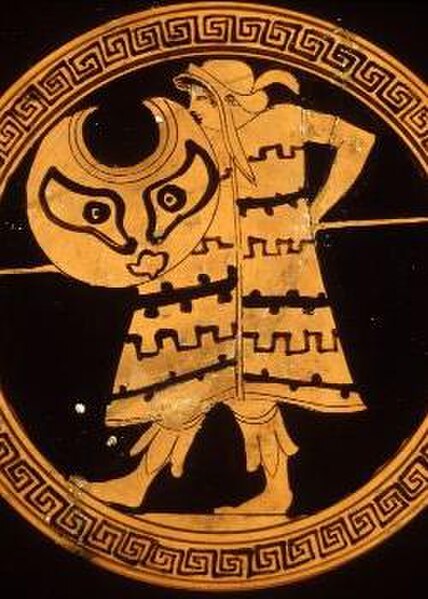A peltast was a type of light infantry originating in Thrace and Paeonia and named after the kind of shield he carried. Thucydides mentions the Thracian peltasts, while Xenophon in the Anabasis distinguishes the Thracian and Greek peltast troops.
Agrianian peltas. This peltast holds three javelins, one in his throwing hand and two in his pelte (shield) hand as additional ammunition.
A peltast with the whole of his panoply (on a red-figure kylix)
A peltast fighting a panther (from an Attic white-ground mug, 5th century BC)
Image: Tomb of Payava Battle scene (detail)
Light infantry refers to certain types of lightly-equipped infantry throughout history. They have a more mobile or fluid function than other types of infantry, such as heavy infantry or line infantry. Historically, light infantry often fought as scouts, raiders, and skirmishers. These are loose formations that fight ahead of the main army to harass, delay, disrupt supply lines, engage the enemy's own skirmishing forces, and generally "soften up" an enemy before the main battle. Light infantrymen were also often responsible for screening the main body of a military formation.
Portuguese Army light infantryman (caçador) of the Peninsular War.
Agrianian peltast, c. 4th century BC
French light infantry in the woods during the Napoleonic era, by Victor Huen.
The pioneer company of the 27th Jäger Battalion returning from a parade in Liepāja (Libau) in 1917.







